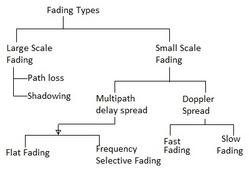Modem AT Commands Explained
Learn about standard AT commands used for configuring and controlling GSM, CDMA, and LTE modems. Includes common commands and their descriptions.
Advertisement
Learn about standard AT commands used for configuring and controlling GSM, CDMA, and LTE modems. Includes common commands and their descriptions.

Explore MSK and GMSK modulation, derived from Offset QPSK, focusing on GMSK modulator/demodulator implementations using the QPSK method.

Explore the Mobile Telephone Switching Office (MTSO), its key functions in managing cellular networks, call routing, handovers, and communication between mobile devices and PSTN.

Explanation of the Okumura Hata model, including the formula, COST-231 extension, and standard path loss calculations for wireless communication.

Explore the differences between open loop and closed loop power control in cellular communication systems, highlighting their mechanisms and applications.

Explore the differences between OTDOA and U-TDOA, two positioning technologies. Learn how they work, their reliance on downlink or uplink signals, and their applications.
A summary of mobile radio systems used in North America, including AMPS, NAMPS, USDC, and others. Details on access methods, frequencies, and modulation.
Learn about ping pong handover, its causes due to improper hysteresis margin, and its negative impacts on network performance and call quality.
Understand the fundamental differences between PMR (Private Mobile Radio) and cellular technologies, including infrastructure, coverage, and applications.

Explore RF drive testing in telecom, its importance in network optimization, common measurements, setup, data analysis, and essential tools for evaluating wireless network performance.

Understand the key differences between Rician and Rayleigh fading channels in wireless communication, focusing on LOS/NLOS components and MATLAB simulation.

Explore the key differences between RRH-based and traditional base station architectures in cellular communication, highlighting advantages and applications.
Understand the differences between RSCP, Ec/No, and RSSI in WCDMA. Learn how they relate to signal strength and quality in wireless communication.
Explore the key differences between RTWP (Received Total Wideband Power) and RSCP (Received Signal Code Power) in WCDMA/UMTS mobile communication systems.

Explore the distinct differences between satellite phones and cell phones. Learn about networks, coverage, cost, and ideal use cases.

Explore the key differences between satellite and mobile communication systems. Understand their infrastructure, coverage, latency, bandwidth, and applications using real-world examples like C-band and GSM.
Explains the differences between SIM card form factors: 1FF, 2FF, 3FF, and 4FF, including their dimensions, use cases, and evolution.

Explore the SLIMbus interface protocol, designed for audio transport between cellular modems and application processors, highlighting its key features and benefits.

Explore the differences between small scale and large scale fading in wireless communication, including their causes, characteristics, and impact on signal strength.

Explore the pros and cons of smartwatches, including features, compatibility, battery life, and potential drawbacks like privacy concerns and distractions.
Advertisement